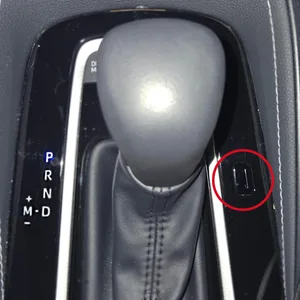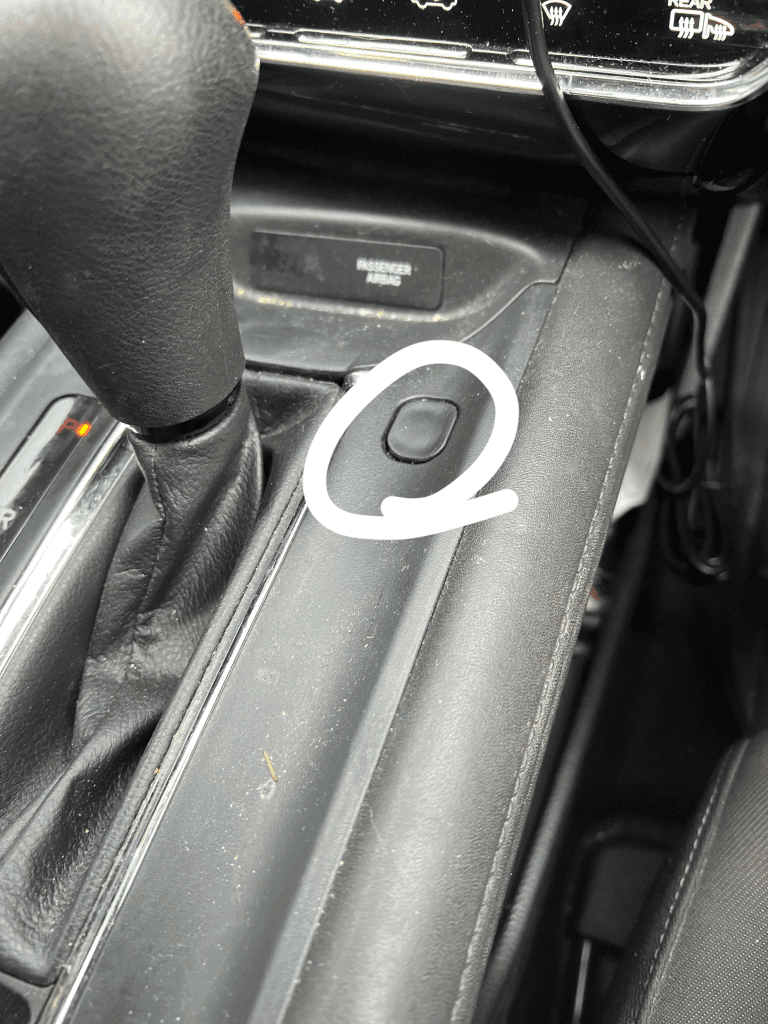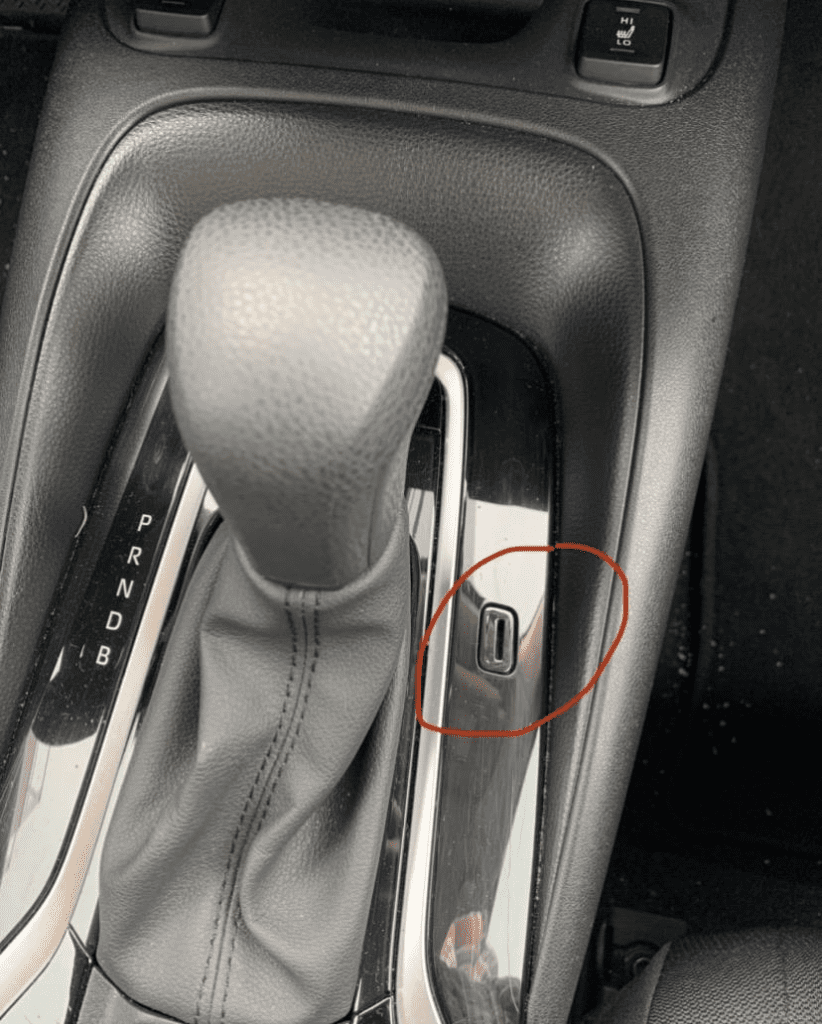If you’ve ever noticed a small, mysterious slot next to your gear shift, you’re not alone. Many drivers have spotted this tiny feature and wondered about its purpose. Could it be a place to insert a special key? A hidden compartment for storage? A fancy add-on for high-tech vehicles?
The answer is much simpler—and far more useful. That little slot houses the shift lock release button, a feature designed to help drivers in emergency situations. While it often goes unnoticed, this small mechanism can be a lifesaver when your car refuses to shift out of park.
Let’s dive deeper into what this feature does, how it works, and why you should know about it before you actually need it.

What Is the Slot Next to Your Gear Shift?
That tiny slot you see next to your gear shift is not just for decoration—it’s actually a cover for the shift lock release button.
In many modern vehicles with automatic transmissions, the shift lock system prevents the car from being moved unless specific conditions are met. Typically, you need to:
- Have the car turned on
- Press the brake pedal
- Move the gear shift while the system is engaged
This safety mechanism helps prevent accidental shifts into drive or reverse, reducing the risk of accidents. However, what happens if your car battery dies or your transmission malfunctions? That’s where the shift lock release button comes in.
What Does the Shift Lock Release Button Do?
The shift lock release button is a built-in override system designed for situations where you need to move your car but can’t shift gears the usual way.
Here are a few scenarios where the shift lock release button is essential:
- Dead Battery – If your car’s battery dies and you need to push or tow it, you won’t be able to shift out of park without using the shift lock release.
- Brake Light Switch Failure – Some cars require the brake pedal to be pressed before shifting gears. If the brake light switch malfunctions, the system won’t recognize that you’re pressing the brake, leaving you stuck in park.
- Faulty Ignition or Key Issues – If the ignition system fails and your car won’t start, the shift lock can prevent you from putting the car in neutral.
- Parking on a Steep Hill – In rare cases, if you park on a steep incline without engaging the parking brake properly, the weight of the car can put excessive pressure on the transmission, making it difficult to shift out of park.
In all these situations, the shift lock release button provides a manual override that lets you move the gear shift without needing the usual power input from the battery or brake system.

How to Use the Shift Lock Release Button
The shift lock release button is not always directly accessible, especially in newer vehicles. In many cases, it is hidden behind a small plastic cover, which is where the mysterious slot comes into play.
Follow these steps to use the shift lock release button:
- Turn off the car – Make sure the engine is off and the parking brake is engaged.
- Locate the slot near the gear shift – This is usually a small, rectangular opening next to or behind the gear lever.
- Remove the plastic cover – If the button is hidden, you’ll need to pop off the cover using a flathead screwdriver, a key, or even a pen.
- Press the shift lock release button – Once exposed, press and hold the button while shifting the gear lever into neutral.
- Move your car as needed – Once in neutral, you can push, tow, or reposition the vehicle.
- Return the gear to park – After resolving the issue, shift back to park before restarting your car.
⚠️ Important Tip: Do not force the gear shift without pressing the shift lock release. Doing so can damage the transmission.
Why Is the Shift Lock Release Important?
Many drivers don’t realize how crucial the shift lock release button is—until they actually need it. This small but powerful feature prevents accidental movement of the car, ensuring that you only shift gears when it’s safe to do so.

However, it also acts as an emergency backup, allowing you to move your vehicle in critical situations, such as:
- A breakdown in a high-traffic area
- A dead battery in a tight parking spot
- Needing to tow the vehicle without starting it
By understanding how it works ahead of time, you can avoid unnecessary stress and costly repairs if your car ever refuses to shift.
Common Questions About the Shift Lock Release
1. Can the shift lock release damage my transmission?
No, using the shift lock release properly won’t harm your transmission. It’s designed as a built-in safety feature. However, forcing the gear shift without using the release button can cause damage.
2. Where exactly is the shift lock release button located?
It varies by car model. In most vehicles, it’s right next to the gear shift, either covered by a small plastic cap or clearly marked as a button labeled “Shift Lock” or “Shift Release.”
3. Do all automatic cars have a shift lock release button?
Most modern automatic vehicles do, especially those manufactured after the early 2000s. If you’re unsure, check your owner’s manual for the exact location in your car.
4. Can I use the shift lock release if my car is running?
Yes, but it’s usually unnecessary. The shift lock release is meant for situations where the normal shifting process doesn’t work, such as a dead battery or a faulty brake sensor.
Final Thoughts: A Tiny Slot with a Big Purpose
That small slot next to your gear shift might not look like much, but it serves a critical function in emergency situations. The shift lock release button allows you to override the system when your car won’t shift out of park, ensuring that you can still move your vehicle when needed.
Whether you experience a dead battery, a brake light failure, or need to tow your car, knowing how to locate and use this hidden feature can save you from a major headache.
So, the next time you glance at your gear shift and see that mysterious little slot, you’ll know exactly what it is—and why it matters. Because in the right situation, this tiny feature could be a lifesaver.